| Monday
October 8, 2001
At
about the same time as the bombers were launched, bulky C17 military
transport
planes took off from the Ramstein US air force base in Germany, laden
with
37,000 bags of subsistence rations to be dropped for Afghan refugees
and
impoverished civilians. In view of the size of the humanitarian
problems
facing the country, it was a token effort, but the symbolism of
dropping
food alongside bombs was thought to be central to the Bush
administration's
war strategy.
Julian
Borger in Washington, Richard Norton-Taylor and Luke Harding in
Islamabad
ABOARD
A C-17 GLOBEMASTER OVER AFGHANISTAN, Oct. 18 -- The C-17 cargo
plane
was ten minutes from its drop zone when the rear doors opened onto the
night sky high above Afghanistan. Frigid air burst into the cabin,
washing
across two rows of boxes filled with food that stood like soldiers at
attention
before a fluttering American flag.
Crouching
before the open door, his oxygen mask pressing hard against his face, a
staff sergeant named Paul signaled one minute to drop. Then from inside
the cockpit, a pilot electronically released the cables holding back
the
load. With the powerful rush of a freight train gathering speed down a
hill, the 42 boxes flew out the door, bursting open in mid-air and
raining
their contents down upon the dusty valley below.
Within
minutes, 52,000 bright yellow packages that had spilled from this plane
and two other C-17's -- all from the 437th Air Lift Wing based in
Charleston
-- would hit the ground somewhere in northern Afghanistan.
So
went another mission in America's war on hunger in Afghanistan, where
cargo
planes scatter ready-to-eat meals of lentil stew and rice-and-beans
over
remote communities, even as fighter jets shower bombs on Taliban
positions.
With each package marked, in English, ``Food gift from the people of
the
United States of America,'' Washington is hoping to convince the Afghan
people that it is waging war on terrorism and the Taliban, not on them.
It
is a case that has often been a hard to make. In the past two weeks,
American
bombs have devastated a residential community outside Kabul and a
warehouse
used by the International Committee of the Red Cross, killing or
wounding
civilians. Many Western relief organizations have also criticized the
Pentagon
relief program as confusing to the Afghan people and woefully
inadequate
for a nation where as many as 7.5 million people could be at risk of
starving
by the end of the year.
Those
groups have called on the United States to end the attacks immediately
to allow distribution on the ground of food, medicine and supplies
before
Afghanistan's harsh winter arrives later this month.
``We've
run out of food, the borders are closed, we can't reach our staffs and
time is running out,'' Raymond C. Offenheiser, president of Oxfam
America,
said earlier this week.
No
one takes such criticism more to heart than the American crews that
have
been toiling almost non-stop to make these difficult missions work.
Since
the relief campaign started on Oct. 7, the same day the bombing began,
the military has dropped half a million emergency rations, each
containing
two meals.
The
crews contend their drops have been right on target, though they
acknowledge
it is hard to know for sure whether many people are finding, or eating,
the food. For them, a single photograph depicting gaunt Afghans
collecting
the food packets this week was a soul-lifting sight.
``That
was a nice morale boost,'' said Bill, 31, a captain with the 437th and
one of the commanders aboard this C-17. The Air Force requested that
the
last names of the seven crew members aboard this plane not be used for
security reasons.
``There
will always be casualties in war,'' he continued. ``We're just trying
to
help those caught in the middle.''
For
all the apparent simplicity of tossing food from the back of a plane,
the
air drops are remarkably complex.
First,
the State Department must gain permission to fly over half a dozen
countries,
including former Soviet Republics like Georgia, Turkmenistan and
Uzbekistan.
At least two missions have been cancelled because one of those nations
objected to U.S. military jets escorting the C-17's in its air space.
Second,
it takes an army of workers and armada of aircraft to ensure that the
mere
eight seconds it takes for the food boxes to roll off a C-17 go just
right.
There
are KC-135
tanker jets to refuel each C-17 twice during the 15-hour
round-trip
flights between Afghanistan and Ramstein Air Base in Germany, the
command
base for the food drops. There are AWAC's command and control planes to
direct the air traffic. And there are fighter jets to protect the cargo
planes as they lumber over hostile territory.
And
then there are the dozens of workers at Ramstein who build containers
from
cardboard and plywood, fill them with food packets, load and then strap
them down in two rows of 21 each inside the C-17's.
Finally,
there are health risks to the C-17 crews. The planes have been flying
at
unusually high altitudes -- typically over 25,000 feet -- to avoid
Taliban
anti-aircraft fire. But when the cabin is depressurized so that the
rear
door can be opened, crews are put at risk of decompression sickness,
which
occurs when nitrogen bubbles seep into the blood or tissue.
If
those bubbles lodge in the heart, the brain or the joints, they can be
painful or even deadly. For that reason, flight surgeons or
physiologists
have been dispatched with all the air crews to watch for early symptoms
of illness.
``There
is still a threat,'' Col. Robert Allardice, the mission commander, told
crew members from four planes during a pre-mission briefing on
Thursday.
``Don't get cavalier.''
No
one seemed particularly nonchalant on the crew of aircraft number 105,
whose tail bore the blue-white-and-yellow insignia of the 437th: a
crescent
moon and palmetto tree. After an hour-long intelligence and weather
briefing,
prayer with the chaplain and systems checks, number 105 and three other
C-17's left Ramstein shortly after 5 p.m. (Frankfurt time) on Thursday.
``Father,
it is your sky and your world,'' the chaplain said to nearly 50 crew
members
gathered in a Ramstein conference room filled with maps and briefing
slides.
``Bring them all back safely.''
One
of the four C-17's would return safely to base without dropping its
cargo.
Air Force officials declined to explain why, but suggested it was
because
of problems in its drop zone.
The
early part of the route took the planes through central Europe, where
the
crews got spectacular views of the snow-covered Austrian Alps from
their
right-side windows. Then as darkness fell over the Black Sea, they
prepared
for perhaps the trickiest part of the mission: hooking up with a KC-135
tanker for a 15-minute mid-air refueling.
With
the lights of Sebastopol in the Crimea flickering in the distance,
Mark,
a 29-year-old captain who was the aircraft commander, deftly guided the
C-17 to within just 30 feet of the tanker. A boom came down from the
KC-135,
connecting to the C-17's fuel valve just behind the cockpit with a loud
clunk.
``Could
we get 60,000'' pounds of fuel -- almost 9,000 gallons -- Mark asked
the
tanker crew over an intercom system. ``We should be able to afford
that,''
the boom operator replied.
Mid-air
refuelings are always complicated dances when large cargo planes are
involved,
requiring a surgeon-like calm with the stick to keep the aircraft
steady.
Darkness and exhaustion only make the job more difficult.
On
the return flight, Bill, going on 20 hours without sleep, took the
stick
for a second refueling. Struggling to keep the C-17 tucked tightly
under
the tanker's tail, he twice disconnected from the boom before finishing
off the refueling.
``Every
bone in my body is tense,'' he said as the C-17 rolled away from the
tanker's
whale-like underbelly and rejoined formation with its two sister ships
for the final leg home.
As
the C-17's finally entered Afghanistan, the weather was just right for
the mission: clear skies at high altitudes, a scrim of clouds down
below
that masked the plane's movements from the ground. Still, crews on one
of the C-17's reported seeing flashes on the ground that might have
been
anti-aircraft fire.
Twenty
minutes before the drop, the pilot started decompressing the cabin. The
crew's ears began to pop. A bag of potato chips exploded as the air
inside
it expanded. Food packets could be heard bouncing against the sides of
their containers like popcorn as they, too, expanded.
As
the aircraft hit its drop point, one of the pilots electronically
opened
hooks holding straps wrapped around the boxes. With the planes nose
tipped
up at a seven-degree angle, the 42 boxes, each weighing 1,000 pounds
and
carrying 410 packets, rolled out into the inky sky. A ``static'' line
attached
to each one yanked off their tops, allowing the food packages to spill
out.
It
all took less than 8 seconds.
On
another C-17, the loadmasters -- crew members who handle the cargo --
cheered
wildly as the boxes went airborne. But on 105, they calmly picked up
the
web static lines and closed the door. Another load released without a
hitch.
Half
an hour later, the plane would be out of Afghanistan. Eight hours
later,
it would land at Rhein-Main Air Base in Frankfurt, diverted from
Ramstein
by the morning fog. After picking up six pallets of supplies, the C-17
would finally return to Ramstein at 10:40 a.m. local time. They had
been
gone for 17 hours.
Exhausted
but pleased with their work, the crew loaded onto busses, knowing they
would probably fly again as soon as Sunday.
``In
know there are political reasons to be doing this,'' Bill said. ``But
to
us, it is just about getting food to the people.''
Saturday,
November 24, 2001
An
initial phase of humanitarian drops would involve two C17 planes and
some
37,500 rations as well as medical supplies. He said the US had not, as
yet, suffered casualties, denying claims by the Taliban it had shot
down
an aircraft.
by
Jim Dao NY Times For U.S. European
Command
Media Pool
|
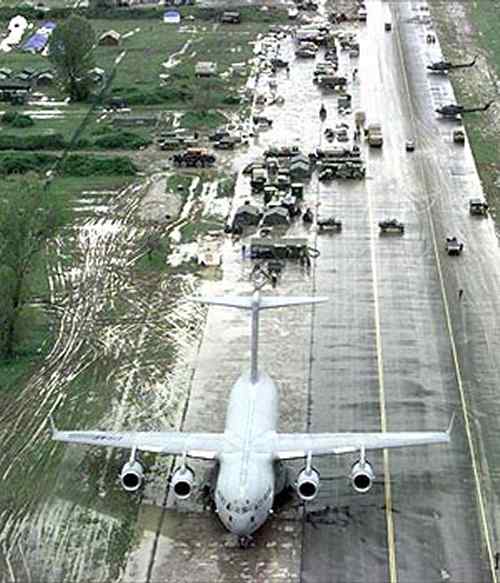
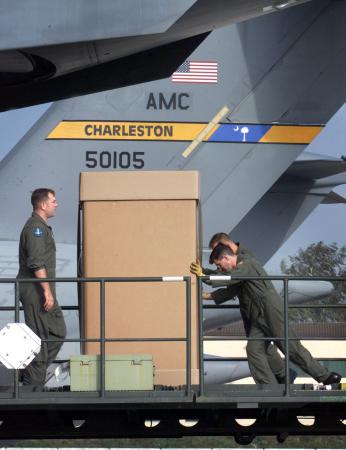
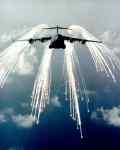 ..
..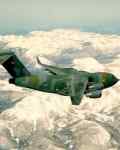 ..
..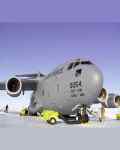 .
.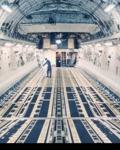 .
.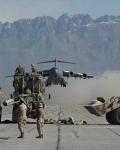
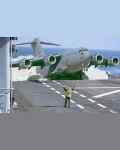 ..
..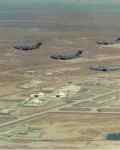 ..
..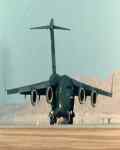 .
.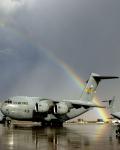 .
.